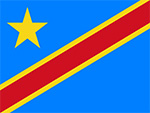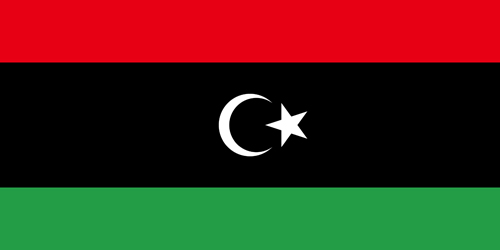Early Warning for all; Use case – Early Warnings for African by African young experts
Deltares + HKV
(
Partnership
)
#SDGAction50315
Description
The United Nations has initiated new actions to ensure that “Within the next five years, everyone on Earth should be protected by early warning systems against increasingly extreme weather and climate change” (UN Secretary-General António Guterres, 2022). In Africa, even 60 per cent of people lack coverage. We want to contribute to the “Early Warning for all” ambition and accelerate the development of effective multi-hazard early warning systems in Africa.
Publicly available satellite data and (global) forecasting models, can better support African governments for Early Warning purposes. Once these global datasets are enhanced with local information (e.g. ground observations), local forecasts become reliable and more accurate. This simultaneously increases the understanding of African weather systems and its response to water bodies, given the effect of climate change and increasingly extreme weather change. We will therefor look at:
• coastal zones;
• urban areas;
• large river systems;
• tropical cyclones.
We belief that the technical implementation of these locally enhanced global forecasts can best be executed by African national governmental organizations themselves; the meteorological services, hydrological services, marine institutes, and national disaster management organizations. This will enable them to independently maintain and develop these systems further afterwards. The Dutch water sector has extensive knowledge and expertise in international flood forecasting and water management. We, HKV and Deltares, offer to support these institutions with our expertise. We invite other organizations in the whole spectrum of Early Warning, such as meteorological agencies, humanitarian sector, universities, governmental institutions, and NGO’s, to join us by contributing their expertise to this initiative.
We belief that capacity development works best when focused on young professionals. We want to bring young experts (below the age of 40) from African organizations together to jointly develop early warning systems. This provides them the opportunity to establish an international network and boost their careers. At the same time, we bring in young Dutch experts (below the age of 40) to ensure a bottom-up approach.
Our aim is that within 5 years most of our African partners can disseminate accurate and reliable Early Warnings in-time, without being dependent on the support of developed countries (like The Netherlands).
This action is new because it proposes a bottom-up approach where young African professionals are the starting point of the initiative. This action adds value because it is focused on the African continent where 60% of the people still lack coverage of Early Warning. We believe this initiative facilitates: Early Warning for All.
The devastating impacts of natural hazards can be mitigated by structural as well as non-structural measures. The implementation of structural measures generally takes a long time and requires significant financial investments. Non-structural measures, such as Early Warning systems, can be very effective in reducing the impacts and can be implemented much faster. The contribution to water safety can therefore be significant as many people and sectors can benefit from Early Warnings.
Young professionals in Africa will be at the steering wheel of the initiative and become the corner stone of the African Young Water Professional Network. This will also generate positive impact in their own region increasing skills on leading the process towards Early Warning for all in Africa. This Network is open to other countries, so once it becomes successful, other countries and institutes are invited to participate in the activities and benefit from the experiences gained. The initial focus is on coastal floods and flash floods using openly available and easily accessible data and information. Later, this can be expanded to riverine flooding, cyclones, droughts or other types of natural hazards.
This action contributes to the following SDG:
• SDG 6: Clean water and sanitation, since early warning does increase resilience of vital infrastructure
• SDG 11: Sustainable cities and communities, since early warning does increase resilience and climate adaptation in urban areas.
• SDG 13: Climate action, with climate change extreme events become more frequent and more severe, early warning is an effective way of risk reduction.
We will build on existing networks for cooperation between national organizations, for example through WMO networks. This way, we ensure alignment with other ongoing programs.
• African young experts (<40 years) working for national governmental institutions with the mandate of flood risk mitigation, such as meteorological services, hydrological services, marine institutes, national disaster management institutes.
• Dutch young experts from HKV, Deltares, and other parties working in the whole spectrum of early warning such as meteorological agencies, humanitarian sector, universities, governmental institutions and NGO’s.
see our publicly available action plan: https://deltares-my.sharepoint.com/:w:/g/personal/jan_talsma_deltares_n…
SDGS & Targets
Goal 6
Ensure availability and sustainable management of water and sanitation for all
6.1
By 2030, achieve universal and equitable access to safe and affordable drinking water for all
6.1.1
Proportion of population using safely managed drinking water services
6.2
By 2030, achieve access to adequate and equitable sanitation and hygiene for all and end open defecation, paying special attention to the needs of women and girls and those in vulnerable situations
6.2.1
Proportion of population using (a) safely managed sanitation services and (b) a hand-washing facility with soap and water
6.3
By 2030, improve water quality by reducing pollution, eliminating dumping and minimizing release of hazardous chemicals and materials, halving the proportion of untreated wastewater and substantially increasing recycling and safe reuse globally
6.3.1
Proportion of domestic and industrial wastewater flows safely treated
6.3.2
Proportion of bodies of water with good ambient water quality
6.4
6.4.1
Change in water-use efficiency over time
6.4.2
Level of water stress: freshwater withdrawal as a proportion of available freshwater resources
6.5
By 2030, implement integrated water resources management at all levels, including through transboundary cooperation as appropriate
6.5.1
Degree of integrated water resources management
6.5.2
Proportion of transboundary basin area with an operational arrangement for water cooperation
6.6
6.6.1
Change in the extent of water-related ecosystems over time
6.a
6.a.1
Amount of water- and sanitation-related official development assistance that is part of a government-coordinated spending plan
6.b
Support and strengthen the participation of local communities in improving water and sanitation management
6.b.1
Proportion of local administrative units with established and operational policies and procedures for participation of local communities in water and sanitation management
Goal 11
Make cities and human settlements inclusive, safe, resilient and sustainable
11.1
By 2030, ensure access for all to adequate, safe and affordable housing and basic services and upgrade slums
11.1.1
Proportion of urban population living in slums, informal settlements or inadequate housing
11.2
11.2.1
Proportion of population that has convenient access to public transport, by sex, age and persons with disabilities
11.3
11.3.1
Ratio of land consumption rate to population growth rate
11.3.2
Proportion of cities with a direct participation structure of civil society in urban planning and management that operate regularly and democratically
11.4
Strengthen efforts to protect and safeguard the world’s cultural and natural heritage
11.4.1
Total per capita expenditure on the preservation, protection and conservation of all cultural and natural heritage, by source of funding (public, private), type of heritage (cultural, natural) and level of government (national, regional, and local/municipal)
11.5
By 2030, significantly reduce the number of deaths and the number of people affected and substantially decrease the direct economic losses relative to global gross domestic product caused by disasters, including water-related disasters, with a focus on protecting the poor and people in vulnerable situations
11.5.1
Number of deaths, missing persons and directly affected persons attributed to disasters per 100,000 population
11.5.2
Direct economic loss attributed to disasters in relation to global domestic product (GDP)
11.5.3
(a) Damage to critical infrastructure and (b) number of disruptions to basic services, attributed to disasters
11.6
By 2030, reduce the adverse per capita environmental impact of cities, including by paying special attention to air quality and municipal and other waste management
11.6.1
Proportion of municipal solid waste collected and managed in controlled facilities out of total municipal waste generated, by cities
11.6.2
Annual mean levels of fine particulate matter (e.g. PM2.5 and PM10) in cities (population weighted)
11.7
11.7.1
Average share of the built-up area of cities that is open space for public use for all, by sex, age and persons with disabilities
11.7.2
Proportion of persons victim of non-sexual or sexual harassment, by sex, age, disability status and place of occurrence, in the previous 12 months
11.a
Support positive economic, social and environmental links between urban, peri-urban and rural areas by strengthening national and regional development planning
11.a.1
Number of countries that have national urban policies or regional development plans that (a) respond to population dynamics; (b) ensure balanced territorial development; and (c) increase local fiscal space
11.b
By 2020, substantially increase the number of cities and human settlements adopting and implementing integrated policies and plans towards inclusion, resource efficiency, mitigation and adaptation to climate change, resilience to disasters, and develop and implement, in line with the Sendai Framework for Disaster Risk Reduction 2015-2030, holistic disaster risk management at all levels
11.b.1
Number of countries that adopt and implement national disaster risk reduction strategies in line with the Sendai Framework for Disaster Risk Reduction 2015–2030
11.b.2
Proportion of local governments that adopt and implement local disaster risk reduction strategies in line with national disaster risk reduction strategies
11.c
Support least developed countries, including through financial and technical assistance, in building sustainable and resilient buildings utilizing local materials
Goal 13
Take urgent action to combat climate change and its impacts
13.1
Strengthen resilience and adaptive capacity to climate-related hazards and natural disasters in all countries
13.1.1
Number of deaths, missing persons and directly affected persons attributed to disasters per 100,000 population
13.1.2
Number of countries that adopt and implement national disaster risk reduction strategies in line with the Sendai Framework for Disaster Risk Reduction 2015–2030
13.1.3
Proportion of local governments that adopt and implement local disaster risk reduction strategies in line with national disaster risk reduction strategies
13.2
Integrate climate change measures into national policies, strategies and planning
13.2.1
Number of countries with nationally determined contributions, long-term strategies, national adaptation plans and adaptation communications, as reported to the secretariat of the United Nations Framework Convention on Climate Change
13.2.2
Total greenhouse gas emissions per year
13.3
Improve education, awareness-raising and human and institutional capacity on climate change mitigation, adaptation, impact reduction and early warning
13.3.1
Extent to which (i) global citizenship education and (ii) education for sustainable development are mainstreamed in (a) national education policies; (b) curricula; (c) teacher education; and (d) student assessment
13.a
Implement the commitment undertaken by developed-country parties to the United Nations Framework Convention on Climate Change to a goal of mobilizing jointly $100 billion annually by 2020 from all sources to address the needs of developing countries in the context of meaningful mitigation actions and transparency on implementation and fully operationalize the Green Climate Fund through its capitalization as soon as possible
13.a.1
Amounts provided and mobilized in United States dollars per year in relation to the continued existing collective mobilization goal of the $100 billion commitment through to 2025
13.b
Promote mechanisms for raising capacity for effective climate change-related planning and management in least developed countries and small island developing States, including focusing on women, youth and local and marginalized communities
13.b.1
Number of least developed countries and small island developing States with nationally determined contributions, long-term strategies, national adaptation plans and adaptation communications, as reported to the secretariat of the United Nations Framework Convention on Climate Change
SDG 14 targets covered
Deliverables & Timeline
Resources mobilized
Partnership Progress
Feedback
Action Network

Timeline
Entity
Region
- Africa
Other beneficiaries
1. Direct beneficiaries: All national hydromet agencies and national Red Crosses
2. Indirect beneficiaries: third parties which may benefit from improved early warnings and early action protocols.
Website/More information
Countries











































Contact Information
Toon, Director marine and coastal systems at Deltares

